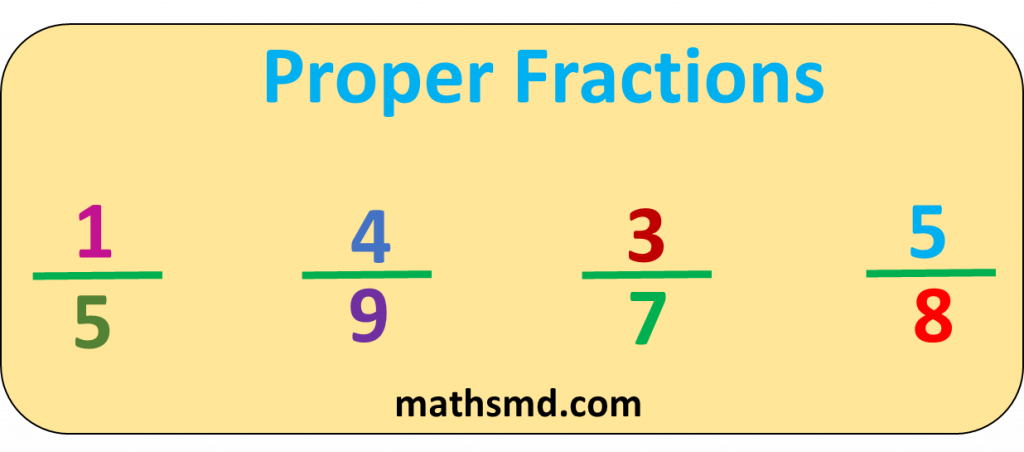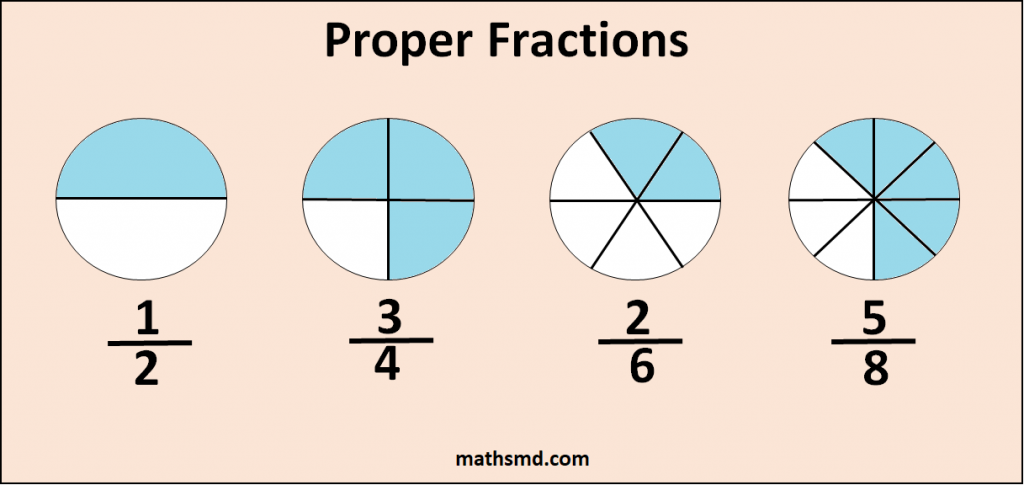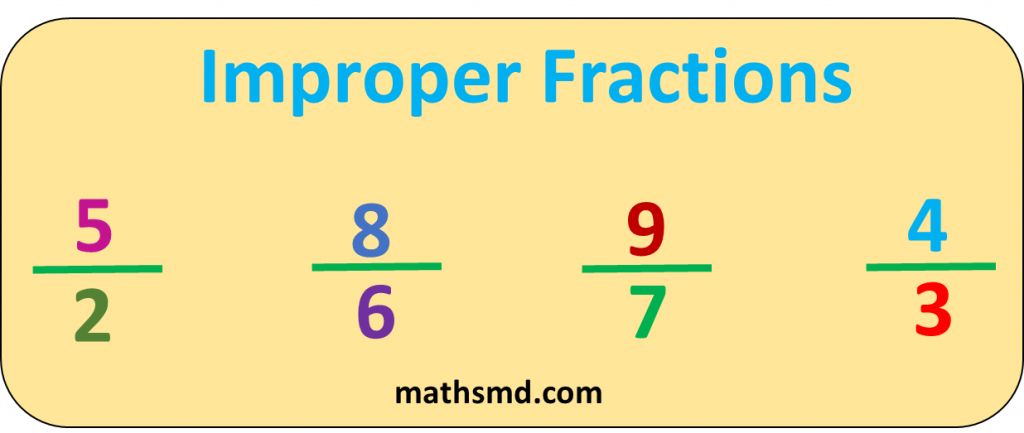Proper Fraction-Improper Fraction – Definition – Example
Proper and Improper Fractions
Proper Fraction: Definition
A “Proper Fraction” is a fraction whose numerator is smaller than it’s denominator.
Example: In below figure 1/5, is a proper fraction because numerator 1 is smaller than denominator 5.
Similarly, 4/9, 3/7 and 5/8 are a proper fractions because every fraction has numerator is smaller than denominator.

Some more examples:
- 1/2
- 2.3/4
- 5/6
- 8/11
- 9/15 etc.
All are proper fractions, where numerator is smaller than denominator.
Note: The value of a proper fraction is always less than 1.

Improper Fraction: Definition
A “Improper Fraction” is a fraction whose numerator is equal to or greater than it’s denominator.

Example: In above figure 5/2, is a improper fraction because numerator 5 is grater than denominator 2.
Similarly, 8/6, 9/7 and 4/3 are a improper fractions because every fraction has numerator is grater than denominator.
Example:
- 3/2
- 4/3
- 7/5
- 10/6
- 14/9 etc.
All are improper fractions, where numerator is greater than denominator.
Note: The value of a improper fraction is always greater than or equal to1.
